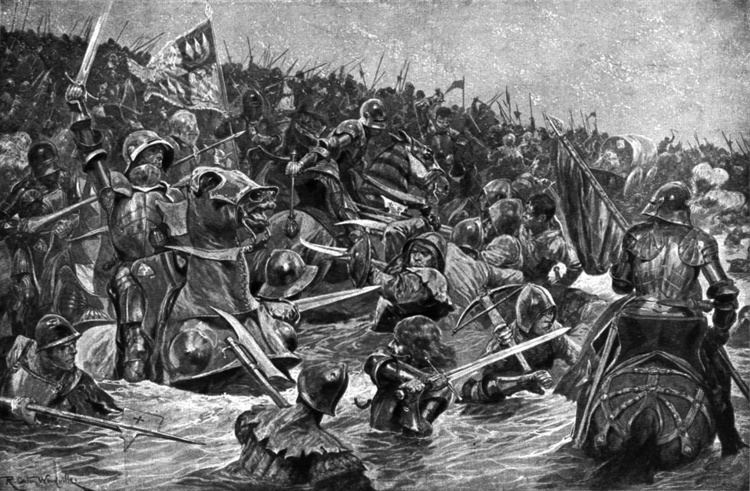Spouse(s) Anne Holland Name John Baron Mother Elizabeth Holland | Father Sir John Neville Noble family Neville Died March 29, 1461 | |
 | ||
Parents John de Neville, Lord Neville Children Ralph Neville, 3rd Earl of Westmorland Siblings Ralph Neville, 2nd Earl of Westmorland Grandchildren Ralph Neville, Lord Neville Similar People Ralph Neville - 1st Earl of W, Richard Neville - 16th Earl, John of Gaunt, Edmund of Langley - 1st Duke | ||
John Neville, Baron Neville (c.1410 – 29 March 1461) was an English nobleman and soldier, slain at the Battle of Towton. His son succeeded to the Earl of Westmorland.
Family
John Neville was born about 1410, the second son of Sir John Neville (d.1420), eldest son of Ralph Neville, 1st Earl of Westmorland from his first marriage to Margaret de Stafford, and Elizabeth Holland (c.1388 – 3 or 4 January 1423), fifth daughter of Thomas Holland, 2nd Earl of Kent and Alice FitzAlan (d.17 March 1416).
He had two brothers, Ralph Neville, 2nd Earl of Westmorland, and Sir Thomas Neville (died c. 1461) of Brancepeth, Durham, and one sister, Margaret, who married Sir William Lucy of Woodcroft, Bedfordshire.
Sometime before 5 February 1442 Neville married Anne Holland, widow of his nephew, Sir John Neville (d. shortly before 16 March 1450), the son of Ralph Neville, 2nd Earl of Westmorland and his first wife, Lady Elizabeth Percy. Anne Holland was the daughter of John Holland, 2nd Duke of Exeter by his first wife, Anne Stafford, the daughter of Edmund Stafford, 5th Earl of Stafford and the widow of Edmund Mortimer, 5th Earl of March . John Neville and Anne Holland had one son, Ralph Neville, 3rd Earl of Westmorland.
According to Cokayne, John Neville was summoned to Parliament 20 November 1459 and 30 July 1460 by special writs directed to Iohanni Nevill, Domino de Nevill, whereby he is held to have become Lord Neville. In another writ of 20 January 1461, attested only by the Council, he is referred to as 'Sir John Neville of Neville'. He was absent from the Parliament at which Richard Plantagenet, 3rd Duke of York, proclaimed himself King.
Originally a supporter of the Duke of York, Neville went over to the Lancastrian side just before the Battle of Wakefield. York gave battle, thinking Neville would arrive to reinforce him, but being attacked instead was defeated and slain. Neville's half-uncle, Richard Neville, 5th Earl of Salisbury, was killed shortly after the battle, and by his testament Neville became Constable of Middleham Castle and Sheriff Hutton Castle.
He was one of the Lancastrian commanders at the Battle of Ferrybridge, and was slain shortly thereafter at the Battle of Towton. The barony was forfeited by attainder on 4 November 1461, and Neville's lands escheated to the crown, leaving his widow, according to Cokayne, 'sadly unprovided for'. Neville's son and heir, Ralph Neville, obtained a reversal of the attainder on 6 October 1472.
After Neville's death his widow, Anne, married James Douglas, 9th Earl of Douglas (d. shortly after 22 May 1491), but had no issue by him. She died 26 December 1486, and was buried at St. Anne's in the Blackfriars, London.
